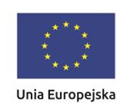AGROCHEMICALS
Agrochemicals are preparations and chemicals aimed at increasing the yield and quality of agricultural products. This sector includes pesticides, mineral fertilizers, growth regulators and feed additives.
In line with REACH regulations, fertilizers and soil improvers are both subject to registration with the European Chemicals Agency (ECHA) if they are placed on the market in quantities of more than 1 ton per year. Component chemicals of mixtures are also subject to registration under REACH regulations.
Crop protection chemicals can be toxic, both in the environment and in humans. Crop protection chemicals are classified as chemicals with a high degree of toxicological risk, therefore their safe use is of the utmost importance.
The European Community defines crop protection chemicals as active substances or preparations containing one or more active substances, in commercial form, which are supplied to the user for the purpose of:
- protecting plants or plant products against harmful organisms or preventing the action of such organisms,
- influencing the life processes of plants in a way other than as a nutrient, e.g. growth regulators,
- preserving plant products, unless they are subjected to specific regulations of the Council of Europe or the European Commission on preservatives,
- destroying unwanted plants, or
- destroying parts of plants, controlling or preventing undesirable growth of plants or their parts.
In the European Union, the legal basis for the regulation of crop protection chemicals is the Council Directive of July 15, 1991 No. 91/414 / EC, which was replaced by Regulation (EC) No. 1107/2009 of the European Parliament and of the Council of October 21, 2009 [3]. The regulation introduces detailed, harmonized rules for the registration of crop protection chemicals in all EU countries. Annex I of the Directive lists all active substances that have received a positive evaluation by EFSA. In practice, this means that only products containing substances approved in Annex I can be used in EU Countries.
Toxicological and ecotoxicological studies are an important part of the risk assessment process for crop protection products. The main purpose of toxicological studies is to determine to what extent the active substance poses a risk to human and animal health and to determine the level of exposure at which no noticeable adverse effects occur.
It is recommended that animal experiments should be replaced by alternative methods, including computational methods such as read-across and grouping of substances as well as QSAR approaches.
We make predictions for such endpoints as:
Physico-chemical properties
| REACH | Endpoint | TEST |
|---|---|---|
| 7.2 | Melting/freezing point | OECD 102 |
| 7.3 | Boiling point | OECD 103 |
| 7.4 | Relative density | OECD 109 |
| 7.5 | Vapour pressure | OECD 104 |
| 7.6 | Surface tension | OECD 115 |
| 7.7 | Water solubility | OECD 105 |
| 7.8 | Partition coefficient n-octanol/water | OECD 107, 117, 123 |
| 7.9 | Flash-point | EU A.9 |
| 7.10 | Flammability | EU A.10, EU A.12, EU A.13 |
| 7.11 | Explosive properties | EU A.14 |
| 7.12 | Self-ignition temperature | EU A.15 |
| 7.13 | Oxidising properties | EU A.17 |
| 7.14 | Granulometry | |
| 7.15 | Stability in organic solvents and identity of relevant degradation products | |
| 7.16 | Dissociation constant | OECD 112 |
| 7.17 | Viscosity | OECD 114 |
Toxicity
| REACH | Endpoint | TEST |
|---|---|---|
| 8.1 | Skin irritation or skin corrosion | OECD 439, 430, 431, 435, EU B.40, EU B.40 bis |
| 8.1.1 | In vivo skin irritation | OECD 439, 430, 431, 435 |
| 8.2 | Eye irritation | EU B.47, OECD 437, EU B.48, OECD 438, OECD 460, OECD 491, OECD 492 |
| 8.2.1 | In vivo eye irritation | OECD 405 |
| 8.3 | Skin sensitisation | OECD 429, 406, 442A, 442B, 442C, 442D, 442E, |
| 8.4 | Mutagenicity | OECD 473 |
| 8.4.1 | In vitro gene mutation study in bacteria | OECD 471 |
| 8.4.2 | In vitro cytogenicity study in mammalian cells or in vitro micronucleus study | OECD 487 |
| 8.4.3 | In vitro gene mutation study in mammalian cells | OECD 490 |
| 8.5 | Acute toxicity | |
| 8.5.1 | By oral route | OECD 420, 423, 425 |
| 8.5.2 | Acute toxicity By inhalation | OECD 403, 433, 436 |
| 8.5.3 | Acute toxicity By dermal route | OECD 402 |
| 8.6 | Repeated dose toxicity | |
| 8.6.1 | Short-term repeated dose toxicity study (28 days), one species, male and female, most appropriate route of administration, having regard to the likely route of human exposure. | OECD 422 |
| 8.6.2 | Sub-chronic toxicity study (90- day), one species, rodent, male and female, most appropriate route of administration, having regard to the likely route of human exposure. | |
| 8.7 | Reproductive toxicity | |
| 8.7.1 | Screening for reproductive/developmental toxicity, one species | OECD 421, 422 |
| 8.7.2 | Pre-natal developmental toxicity study, one species, most appropriate route of administration, having regard to the likely route of human exposure | OECD 414 |
| 8.7.3 | Two-generation reproductive toxicity study, one species, male and female, most appropriate route of administration, having regard to the likely route of human exposure | OECD 416 |
| 8.9.1 | Carcinogenicity study | OECD 451, 453 |
Ecotoxicity
| REACH | Endpoint | TEST |
|---|---|---|
| 9.1 | Aquatic toxicity | |
| 9.1.1 | Short-term toxicity testing on invertebrates (preferred species Daphnia) | OECD 202 |
| 9.1.2 | Growth inhibition study aquatic plants (algae preferred) | OECD 201, 221 |
| 9.1.3 | Short-term toxicity testing on fish: the registrant may consider long-term toxicity testing instead of short- term. | OECD 203, OECD 236, OECD 210 |
| 9.1.4 | Activated sludge respiration inhibition testing | OECD 209 |
| 9.1.5 | Long-term toxicity testing on invertebrates (preferred species Daphnia) | OECD Guideline 211/ EU Method C.20 |
| 9.1.6 | Long-term toxicity testing on fish | |
| 9.1.6.1 | Fish early-life stage (FELS) toxicity test | OECD TG 210 |
| 9.1.6.2 | Fish short-term toxicity test on embryo and sac-fry stages | OECD 212 |
| 9.1.6.3 | Fish, juvenile growth test | OECD 215 |
| 9.2.1 | Degradation (biotic) | |
| 9.2.1.1 | Ready biodegradability | OECD 301 |
| 9.2.1.2 | Simulation testing on ultimate degradation in surface water | OECD 309 |
| 9.2.1.3 | Soil simulation testing | OECD 307 |
| 9.2.1.4 | Sediment simulation testing | OECD 308 |
| 9.2.2.1 | Hydrolysis as a function of pH | OECD 111 |
| 9.2.3 | Identification of degradation products | |
| 9.3.1 | Adsorption/desorption screening | OECD 106, OECD 121 |
| 9.3.2 | Bioaccumulation in aquatic species, preferably fish | OECD 305 |
| 9.4 | Effects on terrestrial organisms | |
| 9.4.1 | Short-term toxicity to invertebrates | OECD 214 |
| 9.4.2 | Effects on soil micro-organisms | |
| 9.4.3 | Short-term toxicity to plants | |
| 9.4.4 | Long-term toxicity testing on invertebrates | |
| 9.4.6 | Long-term toxicity testing on plants | |
| 9.5.1 | Long-term toxicity to sediment organisms | |
| 9.6.1 | Long-term or reproductive toxicity to birds |

